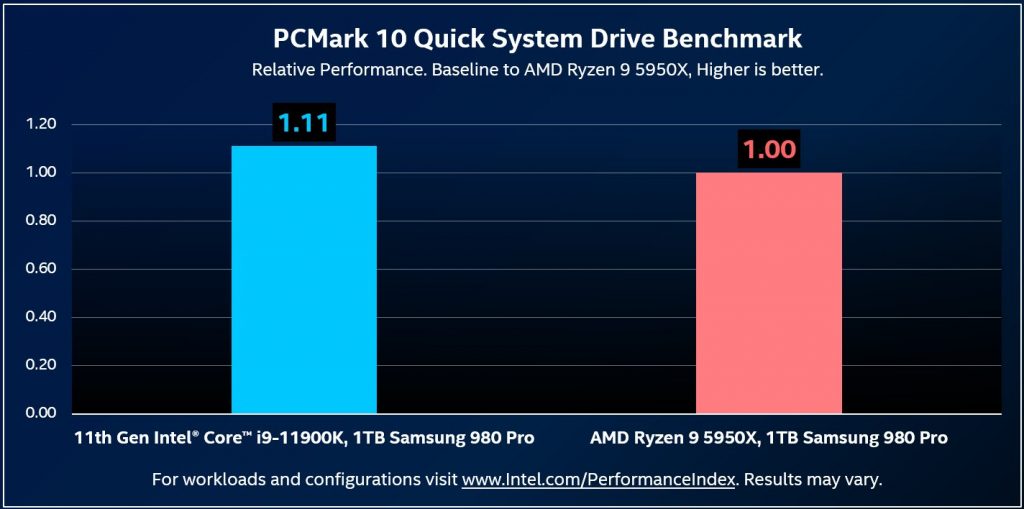Intel Rocket Lake-S processors will reportedly be available for pre-order starting on the 16th of March, with the first units set to ship to customers two weeks later. Additionally, Intel’s chief performance strategist stated that the Rocket Lake-S flagship processor will offer 11% faster storage performance than the Ryzen 9 5950X.
According to Wccftech's report, reviews for Rocket Lake-S processors will be embargoed until the 30th of March, meaning customers will only get to see third-party performance testing two weeks after the reported pre-order date. Apparently, the launch was pushed back a bit due to a microcode update, which in turn pushed back the review embargo.
Image credit: Ryan Shrout
In other news, Ryan Shrout, chief performance strategist at Intel, and Allyn Malventano, storage technical analyst at Intel, have shared data claiming the flagship Intel Core i9-11900K offers an 11% storage performance improvement over the Ryzen 9 5950X. To get this result, Allyn used a PCIe 4.0 1TB Samsung 980 Pro connected to the motherboard with a “riser card to make sure it was CPU attached on both platforms”, then performance was tested in PCMark 10's Quick System Drive benchmark.
Before claiming Intel as the winner, there are some things to note. First, this is a fast and short benchmark, so the results don't show performance in longer, sustained loads – using a riser cable could also lead to performance variance. Finally, the motherboard used in the AMD system had a beta BIOS (3202) that Asus has removed from the motherboard's support page. For a true comparison purposes, the latest stable BIOS should have been used.
KitGuru says: Are you planning on building a new PC in the coming months? Will you be considering an 11th Gen Intel Core CPU?
 KitGuru KitGuru.net – Tech News | Hardware News | Hardware Reviews | IOS | Mobile | Gaming | Graphics Cards
KitGuru KitGuru.net – Tech News | Hardware News | Hardware Reviews | IOS | Mobile | Gaming | Graphics Cards



